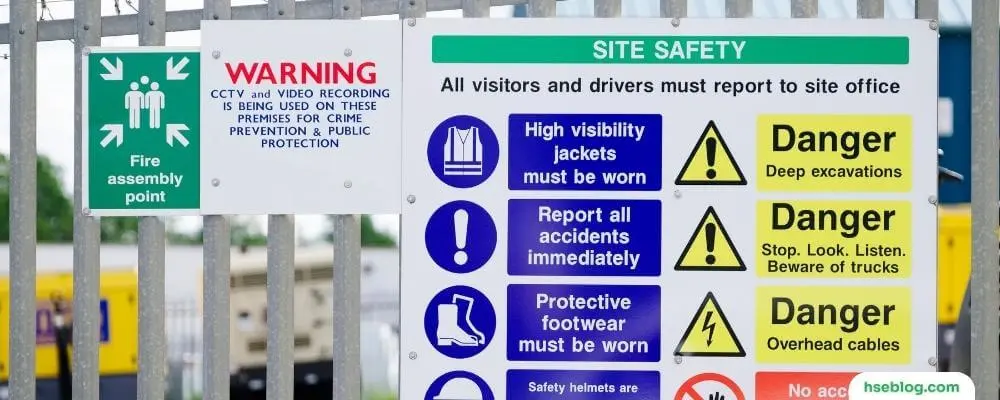In the fast-paced corporate world, effective communication is the key that unlocks success. Clearly conveying ideas, expectations, and information is essential for daily operations, strategic planning, problem-solving, and maintaining a happy and efficient workplace. However, communication isn’t one-size-fits-all. Diverse teams, remote workers, and multicultural environments necessitate the use of different methods of communication.
This blog will explore the myriad ways to communicate in the modern workplace. To optimize their effectiveness, we will explore verbal, written, graphic, and non-verbal communication, their benefits, limitations, and best practices. Additionally, we will shed light on the barriers that can hinder effective communication and offer strategies to overcome them. Whether you’re a team leader trying to boost productivity, an HR manager striving to improve employee engagement, or a staff member looking to communicate better with colleagues, this guide will provide valuable insights to enhance communication in your workplace. Buckle up, and let’s dive in!
Importance Of Communication In The Workplace
Effective communication is of paramount importance in the workplace for several reasons:
- Improves Productivity: Clear instructions and feedback can significantly enhance the efficiency and accuracy of tasks. When employees understand their managers’ roles, goals, and expectations, they can perform their jobs more proficiently.
- Promotes Teamwork: Good communication fosters collaboration and cooperation among team members. It enables sharing of ideas, knowledge, and resources, leading to a more creative and effective team.
- Enhances Employee Engagement: Open and transparent communication can lead to higher employee engagement. When employees feel heard and their opinions valued, they are more likely to contribute actively and feel committed to the organization.
- Facilitates Problem-solving: In the face of challenges or conflicts, effective communication helps in problem-solving and decision-making. By discussing issues openly, teams can generate solutions and resolve disagreements constructively.
- Builds Strong Relationships: Communication helps build and maintain relationships within the workplace. It fosters trust, respect, and positive interactions among colleagues.
- Supports Change Management: Change is inevitable in any organization. Communicating changes effectively can help manage employee expectations and reduce resistance. It helps employees understand why the change is necessary and its implications.
- Ensures Safety and Compliance: Effective communication is vital in industries where safety is a primary concern. Clear communication of safety protocols can prevent accidents and ensure compliance with regulations.
- Boosts Employee Morale: Regular updates and acknowledgment of employee efforts and achievements can significantly boost morale. Employees who feel appreciated are more likely to be satisfied and motivated.
In summary, effective communication is an essential element of a successful workplace. It directly impacts the organization’s culture, employee satisfaction, and the bottom line.
Methods Of Communication
Many problems in health and safety arise due to poor communication. It is not just a problem between management and the workforce – it is often a problem the other way or at the same level within an organization. It arises from ambiguities or even accidental distortion of a message.
The Health and Safety (Information for Employees) Regulations require that the latest version of the approved health and safety poster and safety slogans be displayed prominently in the workplace.
There are four basic types of methods of communication in health and safety:
- Verbal Communication
- Written Communication
- Graphic Communication
- Non-Verbal Communication

1. Verbal Communication
Verbal communication in the workplace mainly involves the direct exchange of information, ideas, or instructions via spoken words. This type of communication can occur in various settings, such as during one-on-one conversations, group discussions, team meetings, presentations, or even casual chats at the water cooler.
Benefits of Verbal Communication
- Immediate Feedback: One of the significant benefits of verbal communication is the ability to receive immediate feedback. When you speak with someone face-to-face, you can gauge their reaction and respond accordingly.
- Personal Interaction: Verbal communication allows for personal interaction and engagement, which can help build and strengthen relationships. It allows individuals to express their emotions and understand each other better.
- Clarification: Verbal communication provides an opportunity for clarification on the spot, which reduces the chances of misunderstandings. If a listener has questions or needs further explanation, they can immediately ask the speaker.
- Non-Verbal Cues: With face-to-face verbal communication, you also observe non-verbal cues, such as body language and facial expressions, which can provide additional context to the spoken words.
Limitations of Verbal Communication
- Misinterpretation: Even verbal communication allows immediate clarification, but misunderstandings can still occur. Accents, speech speed, or use of complex jargon can result in confusion.
- Lack of Record: Unlike written communication, verbal discussions usually don’t leave a physical record unless recorded. This absence can be problematic if the information needs to be referenced later.
- Limited Reach: Verbal communication is less effective when communicating with large groups or across different locations. In such situations, written or digital communication is typically more efficient.
- Influence of Emotions: Emotions can heavily influence verbal communication. If a person is upset, angry, or nervous, it might affect their ability to communicate effectively.
To maximize the effectiveness of verbal communication, it’s crucial to speak clearly and at a moderate pace, use simple language, and engage in active listening. Encourage feedback to ensure your message has been correctly understood. Lastly, be mindful of your tone and non-verbal cues, as they can significantly impact how your message is received.

2. Written Communication
Written communication refers to exchanging messages or information through a written format. This can include traditional methods such as letters, memos, reports, and notices, as well as digital methods like emails, text messages, and posts on social media or company intranets.
Benefits of Written Communication
- Record Keeping: One of the main advantages of written communication is that it provides a permanent exchange record for future reference. This is particularly useful in formal and legal contexts or any situation where details might be disputed later.
- Clarity and Precision: Written communication allows for detailed instructions or information to be communicated with precision. The reader can refer to the written material to fully understand the message.
- Wide Reach: With the advent of digital technology, written communication can be sent instantly to multiple recipients, regardless of their geographical location. This makes it an effective tool for mass communication.
- Time for Thought: Unlike verbal communication, writing gives the sender and the receiver time to reflect on the message. The writer has the opportunity to review and edit their message before sending it, and the recipient can take the time to understand and respond thoughtfully.
Limitations of Written Communication
- Misinterpretation: Even though written communication allows for detail and precision, there can be room for misinterpretation. Tone can be difficult to convey in writing, leading to misunderstandings about the sender’s intent.
- Time-Consuming: Writing can be time-consuming, especially for complex or detailed messages. Similarly, reading and understanding written content can take time, especially when dealing with lengthy or complex material.
- Lack of Immediate Feedback: Unlike verbal communication, written communication doesn’t offer the opportunity for immediate feedback. Delays can occur before the message is read, understood, and responded to.
- Overload: In today’s digital world, the sheer volume of written communication can be overwhelming and lead to missing or overlooked important messages.
Improving written communication skills requires practice. It’s essential to keep the audience in mind, be clear and concise, use proper grammar and spelling, and organize the content logically. In addition, adopting a polite, respectful tone and using bullet points or subheadings for clarity can make written communication more effective.

3. Graphic Communication
Graphic communication encompasses any form that uses visual elements to convey a message. This includes diagrams, graphs, charts, infographics, symbols, maps, and photographs. This also includes videos, animations, and presentations in the digital age. In the workplace, graphic communication can be used in various contexts, such as safety signs, instructions, product descriptions, presentations, and more.
Benefits of Graphic Communication
- Ease of Understanding: Complex information, data, or processes can be difficult to understand in written or spoken form. Graphic communication can simplify and visualize this information, making it easier to digest and remember.
- Engagement: Visual content tends to be more engaging than written or spoken communication, particularly with the increasing use of digital media. This can help capture attention and ensure important messages are taken in.
- Universal Understanding: Graphics, particularly symbols or diagrams, can often be understood regardless of language or literacy skills. This makes them particularly useful in multicultural or international settings.
- Time-Saving: A well-designed graphic can quickly communicate much information, saving time to read or listen to the same information.
Limitations of Graphic Communication
- Misinterpretation: Graphics can be open to interpretation and may lead to misunderstandings if not well-designed. It’s also possible for a graphic to be oversimplified, leading to missing important details.
- Resource Intensive: Creating effective graphics can require special skills, software, and sometimes time. Not everyone can create clear, effective visuals.
- Overuse: The overuse of graphics can lead to information overload or important details being lost amidst the visual elements. Graphics should be used strategically and sparingly for maximum effect.
- Updates: Graphic content, such as diagrams or infographics, can quickly become outdated and may require regular updates to remain relevant and accurate.
To maximize the effectiveness of graphic communication, it’s important to consider the target audience and the message you’re trying to convey. Graphics should be designed to be clear and straightforward, focusing on simplicity. Use colors and shapes strategically to guide the viewer’s eye and highlight important information. Remember, the goal of a graphic is to enhance understanding, not to confuse or distract from the message.

4. Non-Verbal Communication
Non-verbal communication refers to body language, facial expressions, eye contact, posture, and other physical gestures that can deliver messages without using words. It can also include space (proxemics), touch (haptics), and even silence.
Benefits of Non-Verbal Communication:
- Supports Verbal Communication: Non-verbal cues can reinforce or complement verbal messages, enhancing the clarity of communication. For example, a nod can affirm agreement with what’s being said.
- Conveys Emotions: Non-verbal communication effectively expresses emotions, attitudes, and feelings. Facial expressions, for instance, can show happiness, anger, surprise, or fear.
- Regulates Interactions: Non-verbal cues can control the flow of conversation. For example, raising a hand to speak or looking directly at someone can indicate a desire to initiate or control dialogue.
Limitations of Non-Verbal Communication:
- Subject to Misinterpretation: Non-verbal cues can vary greatly between cultures, and what might be seen as a positive gesture in one culture might be seen as disrespectful in another. This can lead to misunderstanding and confusion.
- Less Structured: Unlike verbal or written communication, non-verbal communication is not guided by language rules and structure, making it less straightforward and harder to interpret accurately.

Types Of Communication Barriers
Several types of communication barriers can prevent us from effectively communicating with others. Some of the most common include:
- Physical Barriers: These refer to the physical obstacles that can hinder communication, such as geographical distance, walls, or other structures that might disrupt the flow of communication. Other factors like background noise, poor lighting, or adverse weather conditions can also be considered physical barriers. For instance, cubicles and private offices can make employees feel isolated in an office setting, limiting spontaneous communication.
- Psychological Barriers: These barriers are tied to the mental and emotional state of the communicator or recipient. Examples include stress, which can affect the ability to effectively convey or interpret messages, or fear and anxiety, which can inhibit open and honest communication. Misunderstandings or preconceived notions can also become psychological barriers, causing people to misinterpret or misconstrue messages.
- Semantic Barriers: These barriers arise from the use of language and symbols that the recipient does not understand or interprets differently than intended. Jargon, technical language, slang, and regional dialects can create semantic barriers. Similarly, cultural differences can cause misinterpretations, as certain words, phrases, or gestures may have different meanings in different cultures.
- Organizational Barriers occur when the organization’s structure or processes inhibit effective communication. It can happen due to a hierarchical structure where information gets distorted or lost as it moves up or down the chain of command. It could also be due to excessive bureaucracy, where information has to pass through numerous channels before reaching the intended recipient. Moreover, “silos” or a lack of cross-departmental communication can hinder effective communication.
- Technical Barriers: These are obstacles associated with the technology used for communication. Faulty or unreliable technology, such as dropped calls, slow internet connections, or malfunctioning equipment, can disrupt communication. Moreover, if the participants are not proficient in using certain technologies, this could also become a barrier.
Understanding these barriers is the first step toward addressing them. Companies can invest in reliable communication technology, provide training for its effective use, create a culture that encourages open and transparent communication, and use clear and understood language.
Conclusion
In conclusion, the four different methods of communication – verbal, written, graphic, and non-verbal – each has unique strengths and applications in the workplace. Each method is vital, from fostering immediate feedback and personal interaction through verbal communication to creating precise, comprehensive records through written communication, from simplifying complex information visually through graphic communication to conveying emotions and regulating interactions through non-verbal cues.
Understanding their benefits, limitations, and barriers that might hinder them is key to harnessing their full potential. By carefully selecting and skillfully using these various communication methods, organizations can enhance their productivity, teamwork, employee engagement, and, ultimately, their success.

